![]() Classic Cars of the 1960s – A Lineup of Automotive Legends
Classic Cars of the 1960s – A Lineup of Automotive Legends
The 1960s was a decade of cultural revolution, and this upheaval was vividly reflected in the automotive world. It was an era where the space race fueled imaginations, and car designs became bolder, more adventurous, and sometimes, outright extravagant. For car enthusiasts and casual observers alike, the 1960s remains a golden age of automotive design and innovation. Let’s delve into some of the most popular and iconic cars that rolled off the assembly lines and onto the roads during this transformative decade.
Ford Mustang
The Ford Mustang, launched in 1964, wasn’t just a car; it ignited a cultural phenomenon. With its attractive styling and affordable price tag, the original Mustang democratized the sports car experience. Initially, performance wasn’t its defining trait, but the availability of a V8 engine hinted at its underlying potential. As the decade progressed, more potent V8s and a slick four-speed manual transmission transformed the lightweight Mustang into a true performer. The availability of fastback and convertible versions broadened its appeal, and even Carroll Shelby, the legendary automotive designer, added his magic touch to the Mustang lineage. The Mustang’s iconic status is so deeply ingrained in popular culture that even people who aren’t car enthusiasts instantly recognize its silhouette.
Chevrolet Camaro
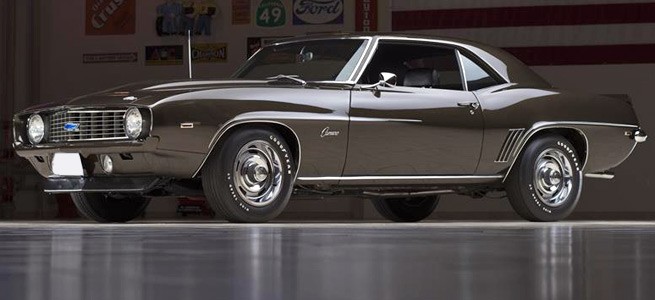 1967 Chevy Camaro SS 427 – A Muscle Car Icon of the Sixties
1967 Chevy Camaro SS 427 – A Muscle Car Icon of the Sixties
Chevrolet’s answer to the Mustang arrived two and a half years later in the form of the Camaro. Following a similar formula, the Camaro boasted a lightweight chassis (under 3,000 lbs), rear-wheel drive, a wide array of engine options, and striking aesthetics. By late 1966, the muscle car movement was gaining serious momentum, and the Camaro was strategically positioned to capitalize on this trend, even offering powerful big-block engine options from the outset. While it took another decade for Camaro sales to surpass the Mustang, the first-generation Camaro has become a highly sought-after classic, frequently commanding top prices at auctions like Barrett-Jackson.
Chevrolet Corvette
While the C3 Corvette became famously associated with NASA colors and was gifted to Apollo astronauts, it’s the preceding C2 generation that truly embodies the ’60s Corvette spirit. Building upon the foundation laid by the first-generation ‘Vette from the 1950s, the 1963 Corvette took inspiration from the stunning Mako Shark concept car, retaining much of its futuristic design in the production model. This generation marked a significant leap forward technically, introducing the big-block engine and independent rear suspension. These advancements transformed the Corvette into a genuine sports car. Originally relatively accessible, big-block C2 Corvettes today routinely fetch six-figure sums among collectors.
Volkswagen Beetle
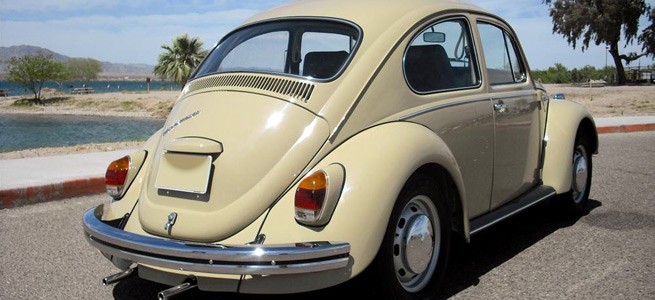 1960s Volkswagen Beetle – The People's Car of the Sixties
1960s Volkswagen Beetle – The People's Car of the Sixties
The Volkswagen Beetle boasts a remarkable history, with production spanning an incredible stretch from 1938 to 2003. The most recognizable iteration, the Type 1, also stands as the most popular, with over 21 million units sold globally. These compact, air-cooled cars were not only enjoyable to drive and affordable but also surprisingly reliable. They played a crucial role in paving the way for more premium German brands like BMW and Mercedes-Benz in the global market. The original Beetle continued production in Mexico for many years, even alongside the radically redesigned New Beetle. In its final year of production, a limited run of 3,000 commemorative editions were released, boasting a modest 50 horsepower.
Volkswagen Microbus
Known officially as the Type 2, the VW Microbus, affectionately nicknamed the “hippie van,” achieved comparable sales success and cultural impact as the Type 1 Beetle. The 1960s witnessed the production of both the T1 and the less streamlined T2 generations. Shared features included a rear-mounted, air-cooled engine and rear-wheel drive. However, its higher center of gravity made it less agile compared to the Beetle. The introduction of the “chicken tax” in the early 1970s hindered the import of new vans into the US, limiting the Microbus’s popularity in America, although it continued production in other countries until 2013.
Lincoln Continental
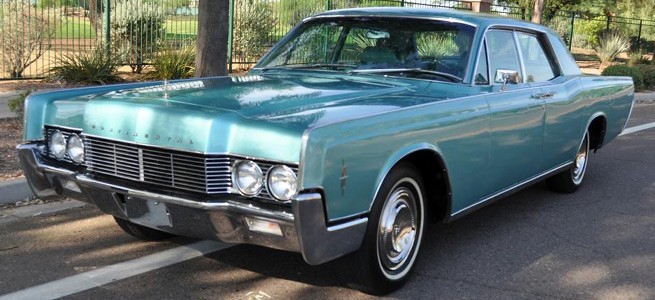 1960s Lincoln Continental – Slab-Sided Luxury and Style
1960s Lincoln Continental – Slab-Sided Luxury and Style
The Lincoln Continental, particularly the slab-sided models produced from 1961 to 1969, is a true design icon of the 1960s. This generation’s design was a radical departure from the preceding Mark X Continental, although both models were undeniably large vehicles. A distinctive feature introduced with this generation was the rear-hinged “suicide doors.” Coupled with its imposing, almost gangster-esque aesthetics, opulent interior, and plush ride quality, the Continental proved to be a strong seller, despite its premium price. It also gained notoriety as the vehicle President John F. Kennedy was riding in during his assassination in 1963.
Plymouth Barracuda
While the Plymouth Barracuda is now recognized as one of the most valuable muscle cars at auction, its origins were relatively humble. Launched just two weeks ahead of the Ford Mustang, the first-generation Barracuda was an attractive fastback coupe version of the Plymouth Valiant. Its front end was conventional, but the rear showcased a distinctive and expansive wraparound glass. The second generation, introduced in 1967, adopted a more muscular appearance and offered potent V8 engines, including the legendary 426 Hemi.
Shelby Cobra
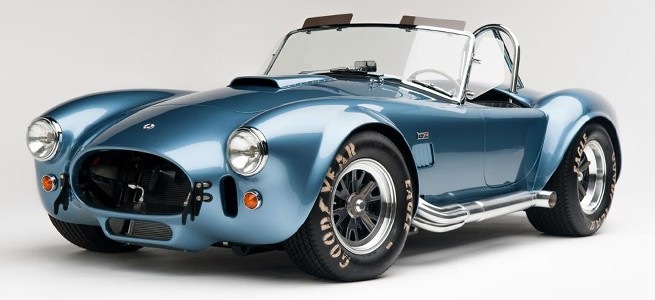 1960s Shelby Cobra 427 – Lightweight Powerhouse
1960s Shelby Cobra 427 – Lightweight Powerhouse
Driven by a desire to create a potent and lightweight sports car, race car driver Carroll Shelby embarked on a project in the early 1960s. By combining an AC Ace body with a Ford-sourced V8 engine, Shelby birthed one of the most legendary street and race cars ever conceived: the Shelby Cobra. Sold from 1962 to 1967, the Shelby Cobra is often grouped with the ultimate muscle cars. Weighing in at just over 2,000 lbs and packing a massive 427 V8, the Cobra could achieve a 0-60 mph acceleration time of just 4.5 seconds, limited primarily by traction.
Futura – Batmobile
The inclusion of a 1955 Lincoln concept car on a list of ’60s cars might seem unusual. However, after its show circuit appearances, the wildly popular bubble-top concept car, the Futura, changed hands several times and fell into disrepair. When ABC sought to bring Batman to television for the first time, they needed a fitting Batmobile. The Futura was rapidly (and expensively) transformed, becoming the iconic superhero vehicle beloved by a generation. Pow!
Jaguar E-Type
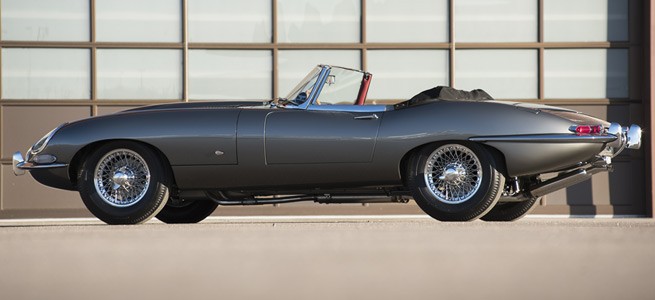 1960s Jaguar E-Type – British Automotive Elegance
1960s Jaguar E-Type – British Automotive Elegance
Produced from 1961 to 1975, the Jaguar E-Type defined the British sports car of the era. Universally admired for its stunning beauty, the E-Type is often considered among the most aesthetically pleasing cars of all time. Built upon a proper racing chassis, it offered exceptional handling and driving dynamics. The Series 1 models featured smooth inline-six-cylinder engines, which, while not always the most reliable, delivered a refined driving experience. The Jaguar E-Type played a pivotal role in bolstering the reputation of British automobiles in the US market, a remarkable achievement in itself.
Ferrari 250 GTO
The 250 GTO was essentially the F40 of the 1960s. Another contender for the title of “most beautiful car” on this list, the 250 GTO is an early masterpiece from Enzo Ferrari’s design studio. It housed a 3.0-liter V12 engine producing 300 horsepower, propelling its lightweight body (under 2,000 lbs) with authority. The 250 GTO dominated racetracks worldwide. Originally, its price was roughly double that of a Corvette, a reasonable sum for an exotic car that delivered both breathtaking performance and stunning looks. Want to acquire one today? Unfortunately, in 2013, a 250 GTO fetched over $38 million at auction, and currently, two are listed for sale with price tags exceeding $55 million.
Ford GT40
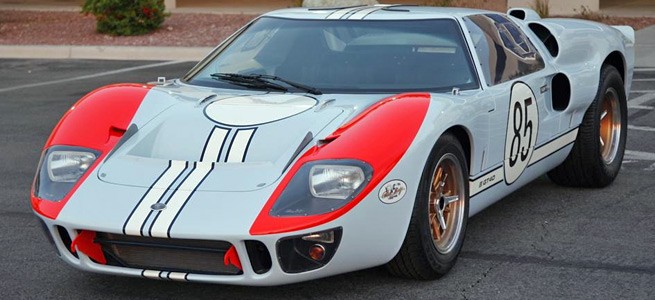 Ford GT40 Supercar – Racing Legend of the Sixties
Ford GT40 Supercar – Racing Legend of the Sixties
From 1964 to 1969, Carroll Shelby played a key role in developing his ultimate automotive creation: the Ford GT40. While his Cobra and Daytona models were achieving success in the GT class, Henry Ford II aimed to challenge Enzo Ferrari in the premier prototype racing category. The visually striking GT40 initially showed promise but struggled on the track. Once Shelby took over the program, the 427 V8-powered GT40 began to dominate the competition. Its dominance was staggering. In a single year, it triumphed at the 24 Hours of Daytona, the 12 Hours of Sebring, and the 24 Hours of Le Mans, securing first, second, and third place at all three prestigious races. Remarkable!
Aston Martin DB5
The Aston Martin DB5 arguably represents the quintessential grand tourer, setting the benchmark for all subsequent GT cars. Even upon its debut in 1963, the DB5 exuded an air of exclusivity and expense. Many consider its design to be as timelessly elegant as the iconic Mercedes-Benz Gullwing. Power was abundant, delivered by a refined 4.0-liter inline-six engine paired with a buttery-smooth ZF 5-speed transmission. It’s worth noting that a 5-speed gearbox was a relatively advanced feature, appearing roughly 20 years before becoming commonplace. The DB5’s design was both classic and muscular, incorporating design cues and character lines that still resonate in modern Aston Martin models. This enduring appeal is precisely why it became James Bond’s vehicle of choice, and for many enthusiasts, their dream car as well.
Chevrolet Chevelle
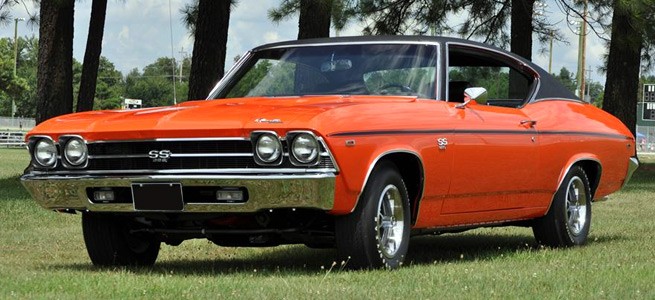 1960s Chevy Chevelle – A Muscle Car Staple
1960s Chevy Chevelle – A Muscle Car Staple
The Chevelle frequently ranks high on many muscle car enthusiasts’ lists. While its exact position is debatable, there’s no denying the Chevelle’s legendary status within the muscle car pantheon and its prominence as one of the standout models of the era. The Chevelle reached its performance zenith in 1970 with the formidable 450 hp LS6 SS, but the ’60s versions were far from slow. The 1964 debut model, equipped with a 220 hp V8, was just the starting point. Once Pontiac unleashed the GTO, the competition intensified. The 327 engine was added mid-year, and by 1966, the potent 396 engine, producing well over 350 hp, became available.
Pontiac GTO
Speaking of the GTO, Pontiac’s engineers, facing a ban on factory-supported racing, sought to inject excitement into their model lineup. Another restriction limited mid-size cars to mid-size engines (330 cubic inches or less), but Pontiac cleverly circumvented this rule by offering the GTO as an option package. This package just happened to include a 325 hp 389 V8 engine. Generating 100 more horsepower than its competitors in the mid-size segment was a significant advantage in that era. The GTO instantly became a pop culture icon and is widely credited with initiating the muscle car wars.
Lamborghini Miura
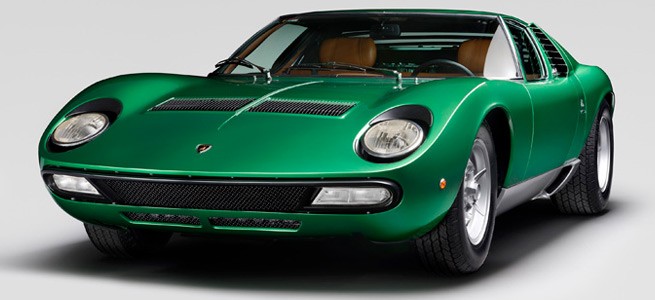 1960s Lamborghini Miura – The Original Supercar
1960s Lamborghini Miura – The Original Supercar
The iconic Miura is celebrated for its beauty, but surprisingly, Ferruccio Lamborghini, the company’s founder, wasn’t initially a fan. He favored luxurious GT cars, like Lamborghini’s earlier 350GT and 400GT models. The Miura represented a significant departure, featuring sleek, race car-inspired lines and a groundbreaking mid-engine layout specifically designed for performance. Upon its debut in 1966, the 3.9-liter V12 engine produced an impressive 350 horsepower, and its aerodynamic body enabled it to claim the title of the fastest production car in the world at the time.
Chevrolet Impala
The 1961 Impala marked Chevrolet’s full-size styling direction for the new decade, showcasing cleaner, more streamlined designs for their larger vehicles. The third-generation Impala continued to offer Chevrolet’s most potent engines, including the 409 cubic inch V8, famously immortalized in a Beach Boys song. It wasn’t just its considerable size for the time, but the impressive output of one horsepower per cubic inch that transformed the 409 hp Impala into a formidable drag strip contender. The expansive fenders and trunk would later provide ample space for lowrider enthusiasts to install airbags and hydraulic systems.
Porsche 911
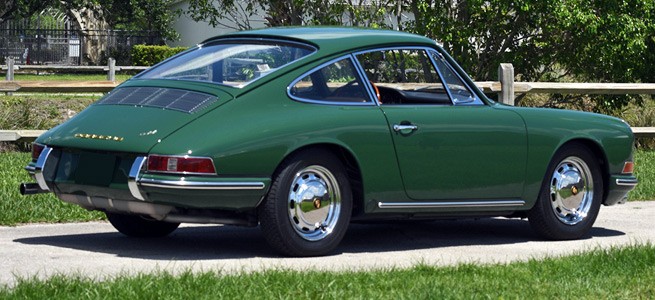 1960s Porsche 911 – The Start of an Icon
1960s Porsche 911 – The Start of an Icon
Ferdinand Porsche sought to develop a larger, more powerful successor to his initial model, the 356. This replacement would evolve into an automotive legend, outlasting its creator. The 1964 911, while not a horsepower behemoth with its 128 hp flat-six engine, immediately established itself with its inherent beauty and exceptional handling dynamics. The infamous Porsche options list originated during this era, offering features like targa tops and even gasoline-burning cabin heaters in the ’60s. While turbocharging wouldn’t arrive until the ’70s, the 911’s legendary journey began here.
Toyota 2000GT
Japan’s first true collectible car originated as a Toyota show car in 1965. The model garnered critical acclaim and entered production in 1967. While its 2.0-liter inline-six engine was less powerful compared to other GTs of the period, its refined handling prowess enabled it to outperform many more powerful cars on the track, earning it a dedicated following and numerous racing victories. Its “coke bottle” styling is considered among the most beautifully executed designs of its kind, and it even caught the eye of James Bond, who drove one in You Only Live Twice.
Lotus Elan
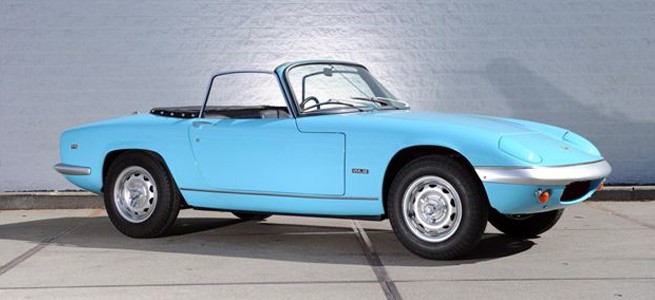 1960s Lotus Elan – Lightweight British Roadster
1960s Lotus Elan – Lightweight British Roadster
Glancing at a ’60s Elan, one might mistake it for a ’90s Mazda Miata. The Lotus design was remarkably ahead of its time (and the Mazda was intentionally retro), giving it a timeless appeal that remains relevant even today. The Elan was an unapologetically focused sports car, initially offered solely as a two-seater roadster. With a modest 108 hp at launch, the Elan relied on its exceptionally lightweight construction and superb handling to deliver an engaging sports car experience. Its minimalist design was both attractive and appropriately low-slung and curvaceous. It quickly became a minor legend in its own right, elevating Lotus’s global reputation.
Buick Riviera
In the early 1960s, Buick identified a need for a personal luxury car to compete with the immensely popular Ford Thunderbird. Inspired by a custom Rolls-Royce, Buick’s design chief, Bill Mitchell, envisioned a sharp-edged design for GM. After some refinements, the 1963 Riviera debuted to widespread critical and commercial success. Its blend of crisp, angular lines and sophisticated styling, combined with the emerging muscular aesthetic, resulted in what many consider the most visually striking Buick ever created. Later iterations offered enhanced performance, but the first-generation GS models epitomize the best of GM design from the ’60s.
Shelby Daytona Coupe
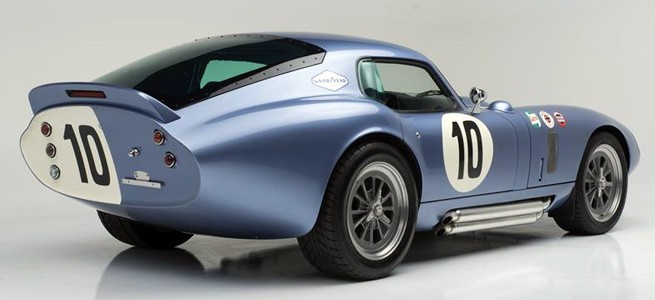 1960s Shelby Daytona Coupe – Aerodynamic American Race Car
1960s Shelby Daytona Coupe – Aerodynamic American Race Car
The Shelby Cobra was initially conceived to challenge Ferrari’s dominance on high-speed racing circuits. However, Shelby recognized a limitation in the powerful Cobra’s design: its open cockpit restricted its top speed to below 160 mph. Utilizing a wrecked Cobra chassis, skilled craftsmen hand-formed stunning bodywork, resulting in the first Daytona Coupe. With a top speed of 190 mph, the Daytona Coupe secured numerous class victories and set 25 speed records at Bonneville, proving its aerodynamic superiority.
Studebaker Avanti
By the late 1950s, Studebaker was facing financial difficulties, and a halo car was seen as a potential solution to revitalize sales. The Avanti emerged as a fiberglass sports car, conceptually similar to the Corvette, offering a robust V8 engine as the sole powertrain option. Despite its attractive design and focus on safety, the Avanti sold fewer than 2,000 units in its debut year. Sales improved slightly the following year, but not sufficiently to rescue the company from its mounting financial woes. Production ceased in December 1963 when the Studebaker plant closed. While Studebaker eventually faded away, the Avanti nameplate retains a lingering presence among car enthusiasts.
Chevrolet Corvair
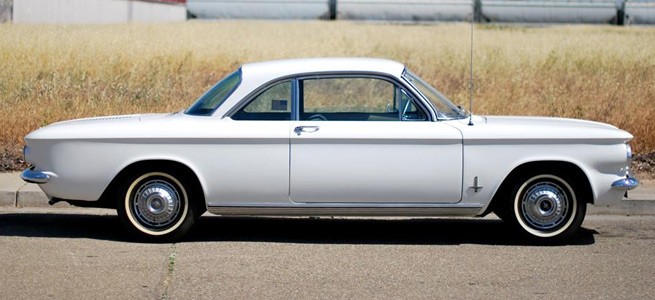 1960s Chevy Corvair – Rear-Engined American Innovator
1960s Chevy Corvair – Rear-Engined American Innovator
The fully sealed, Tesla-esque front grille of the Chevrolet Corvair hints at its unconventional engineering. Unlike its competitors and every other GM model, the Corvair employed a rear-engine layout, similar to the Porsche 911. Initially conceived to compete with compact cars like the VW Beetle and Ford Falcon, the Corvair featured relatively conventional 2-door, 4-seater styling. The first generation debuted in 1960 with a starting price under $2,000. While the Corvair underwent continuous improvements throughout its production run, American drivers were unaccustomed to the rear weight bias, and the Corvair unfairly gained a reputation as being dangerous.
Jensen Interceptor
Think of the Jensen Interceptor as a Ferrari GTC4Lusso with a distinctive ’70s-style mustache. Jensen, a British car manufacturer with 30 years of history known for its unique rear window designs, unveiled the appropriately named Interceptor in 1966. With its long hood and that peculiar ’70s bubble rear window, the Interceptor possessed a truly unique aesthetic. While reliability was questionable, it delivered impressive performance courtesy of Chrysler V8 engines, including the substantial 440 cubic inch unit. Just over 6,000 Interceptors were produced before Jensen ceased operations in 1976. However, the Interceptor’s enduring coolness has led to plans for a potential revival.
These cars represent just a glimpse into the diverse and exciting automotive landscape of the 1960s. Do you agree with this selection? Are there any other Popular Cars From The 1960s that you believe deserve recognition? Let us know in the comments which models you consider the most memorable and iconic from this transformative decade.